Articles
- Page Path
- HOME > Korean J Community Nutr > Volume 25(5); 2020 > Article
- Research Article
- Sodium Reduction Practice and Importance-Performance Analysis of Sodium Reduction Methods in School Foodservice in Daegu
- Su-Hyeon Kim, Eun-Kyung Shin, Yeon-Kyung Lee
-
Korean Journal of Community Nutrition 2020;25(5):386-395.
DOI: https://doi.org/10.5720/kjcn.2020.25.5.386
Published online: October 31, 2020

2Instructor, Food Science and Nutrition, Kyungpook National University, Daegu, Korea

3Professor, Food Science and Nutrition and Center for Beautiful Aging, Kyungpook National University, Daegu, Korea

-
Corresponding author:
Yeon-Kyung Lee,
Email: yklee@knu.ac.kr
- 120 Views
- 0 Download
- 4 Crossref
- 0 Scopus
Abstract
Objectives
The aim of this study was to investigate sodium reduction practices in school foodservice in Daegu.
Methods The survey included 199 nutrition teachers and dietitians working at elementary, middle and high schools in Daegu. The survey topics included the following: the frequency of salinity measurement, workers in charge of the measurement, average salinity of the soup and stew served, frequency and difficulties of offering low-sodium meals, Importance-Performance Analysis (IPA) of sodium reduction methods in school foodservice and the need for political support in encouraging sodium reduction.
Results The mean salinity of the soup and stew was higher in high school foodservice than in elementary and middle school foodservice. Middle and high schools have difficulties in offering low-sodium meals due to concerns of decreasing satisfaction for the meals. The results of the IPA of programs to reduce sodium in school meals showed that most of the items in the cooking and serving stages were in the 2nd quadrant (Keep up the good work), and all purchasing and menu planning stages occupied the 3rd quadrant (Low priority). To reduce sodium in school meals, government support is required in developing low-sodium recipes for school foodservice, encouraging education on sodium reduction for school foodservice officials and developing low-sodium food for institutional foodservice.
Conclusions To encourage sodium reduction in school meals, the priority is to make low-sodium recipes available. Also, it is necessary to develop a program that calculates the sodium content in menus and processed foods through National Education Information System and to establish standards for sodium levels in school foodservice.
Published online Oct 31, 2020.
https://doi.org/10.5720/kjcn.2020.25.5.386
Sodium Reduction Practice and Importance-Performance Analysis of Sodium Reduction Methods in School Foodservice in Daegu
Abstract
Objectives
The aim of this study was to investigate sodium reduction practices in school foodservice in Daegu.
Methods
The survey included 199 nutrition teachers and dietitians working at elementary, middle and high schools in Daegu. The survey topics included the following: the frequency of salinity measurement, workers in charge of the measurement, average salinity of the soup and stew served, frequency and difficulties of offering low-sodium meals, Importance-Performance Analysis (IPA) of sodium reduction methods in school foodservice and the need for political support in encouraging sodium reduction.
Results
The mean salinity of the soup and stew was higher in high school foodservice than in elementary and middle school foodservice. Middle and high schools have difficulties in offering low-sodium meals due to concerns of decreasing satisfaction for the meals. The results of the IPA of programs to reduce sodium in school meals showed that most of the items in the cooking and serving stages were in the 2nd quadrant (Keep up the good work), and all purchasing and menu planning stages occupied the 3rd quadrant (Low priority). To reduce sodium in school meals, government support is required in developing low-sodium recipes for school foodservice, encouraging education on sodium reduction for school foodservice officials and developing low-sodium food for institutional foodservice.
Conclusions
To encourage sodium reduction in school meals, the priority is to make low-sodium recipes available. Also, it is necessary to develop a program that calculates the sodium content in menus and processed foods through National Education Information System and to establish standards for sodium levels in school foodservice.
Fig. 1
Importance-Performance Analysis of sodium reduction methods in school foodservice.
Table 1
Current status of sodium reduction in school foodservice in Daegu
Table 2
Comparison of average salt levels between soup and stew served in school foodservice
Table 4
Importance - Performance Analysis of sodium reduction methods in school foodservice
Table 5
Sodium reduction education practice for school foodservice workers and education methods
Table 6
Needs for policy support to activate sodium reduction practice
References
-
Ministry of Education Student Health Information Center. School foodservice execution status [internet]. 2019 [updated 2019 May 31]. [cited 2019 Aug 5].Available from: http://www.schoolhealth.kr/web/bbs/selectBBSList.do?bbsTyCode=BBST01&bbsId=0201&lstnum1=2856&pageIndex=1&pageUnit=10&dataType=&searchCnd=&searchWrd=.
-
-
Ministry of Education. Sodium reduction of school foodservice guide book [internet]. 2014 [updated 2014 Feb 27]. [cited 2018 Mar 13].
-
-
Lee KS. Use of salimeters and sodium reduction education in school foodservice in the Gyeonggi area. J Korean Diet Assoc 2013;19(2):173–181.
-
-
Lee JH. Awareness and practice of sodium reduction by elementary, middle and high school dietitians in Gyeonggi area. J East Asian Soc Dietary Life 2012;22(6):734–743.
-
-
Yu KH. In: The investigation of actual condition about sodium reduction practice for school food service by nutritionist's sodium related eating habits in Seoul area [master's thesis]. Sookmyung Women's University; 2014.
-
-
Ha IH, Lyu ES. Awareness, practice, and obstruction of sodium reduction by middle school dietitians in Busan area. Korean J Food Cook Sci 2015;31(2):225–232.
-
-
Lee MJ. In: Survey on the current state of sodium reduction according to dietary behavior and nutrition knowledge of school dietitian [master's thesis]. Kyungnam University; 2015.
-
-
Jung MJ. In: A study on the dietary behaviors related to the sodium intake and the sodium reduction enforcement status in school meals by the school nutrition teachers and dietitians in Jeju [master's thesis]. Jeju National University; 2015.
-
-
Kim EK, Kim HY. School dietitian awareness, practice, and sodium reduction plan in school meal service. Korean J Food Cook Sci 2016;32(2):222–232.
-
-
Lee NY, Lee YK. Comparison of salinity and sodium content by the salinity measurement frequency of soups of child-care centers enrolled in the Center for Children's Food Service Management in Daegu. Korean J Community Nutr 2020;25(1):13–20.
-
-
Kim JN, Park SY, Ahn SH, Kim HK. A survey on the salt content of kindergarten lunch meals and meal providers' dietary attitude to sodium intake in Gyeonggi-do area. Korean J Community Nutr 2013;18(5):478–490.
-
-
Jiang L, Shin D, Lee YK. Salinity of representative Korean foods high in sodium from home meals, foodservice, and restaurants. Korean J Community Nutr 2018;23(4):333–340.
-
-
Jiang L, Shin EK, Seo JS, Lee YK. Development of standards for reducing the sodium content and salinity of Korean fermented soybean sauce and representative Korean foods high in sodium. J Nutr Health 2019;52(2):185–193.
-
-
Lee KS. In: Study on the perception of school dietitians about sodium and the analysis on sodium reduction using NEIS [master's thesis]. Kyonggi University; 2013.
-
-
Kim BR. “I hate sodium”… Winged low-sodium product. The Seoul Economic Daily; 2020 [cited 2020 Sep 5].Available from: https://www.sedaily.com/NewsVIew/1Z5D55JS5F.
-

 KSCN
KSCN
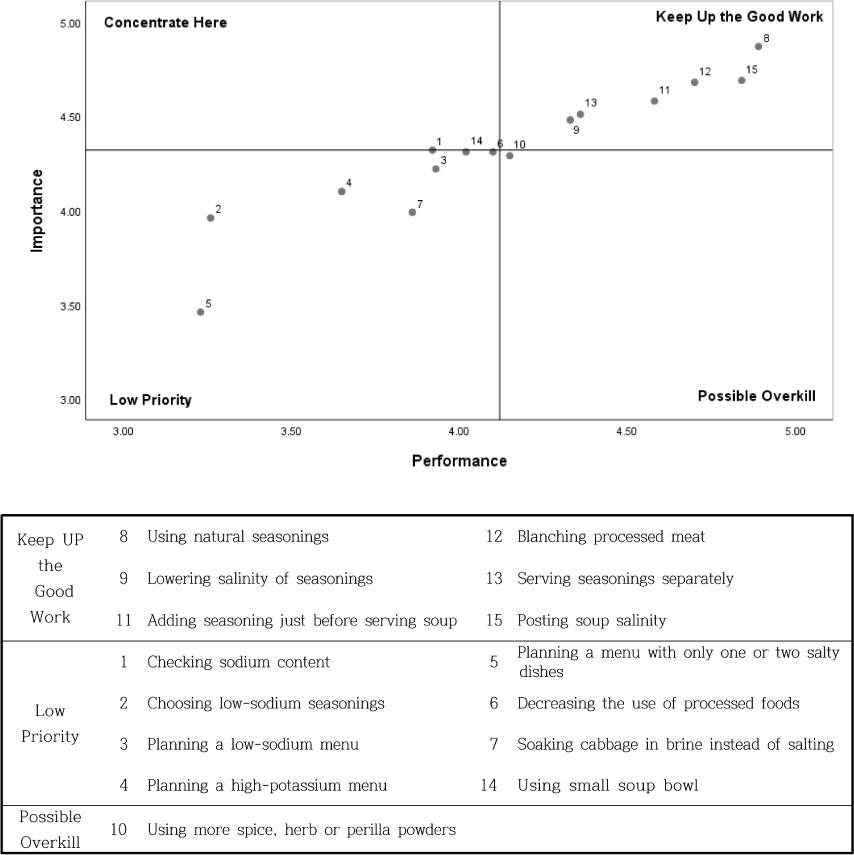
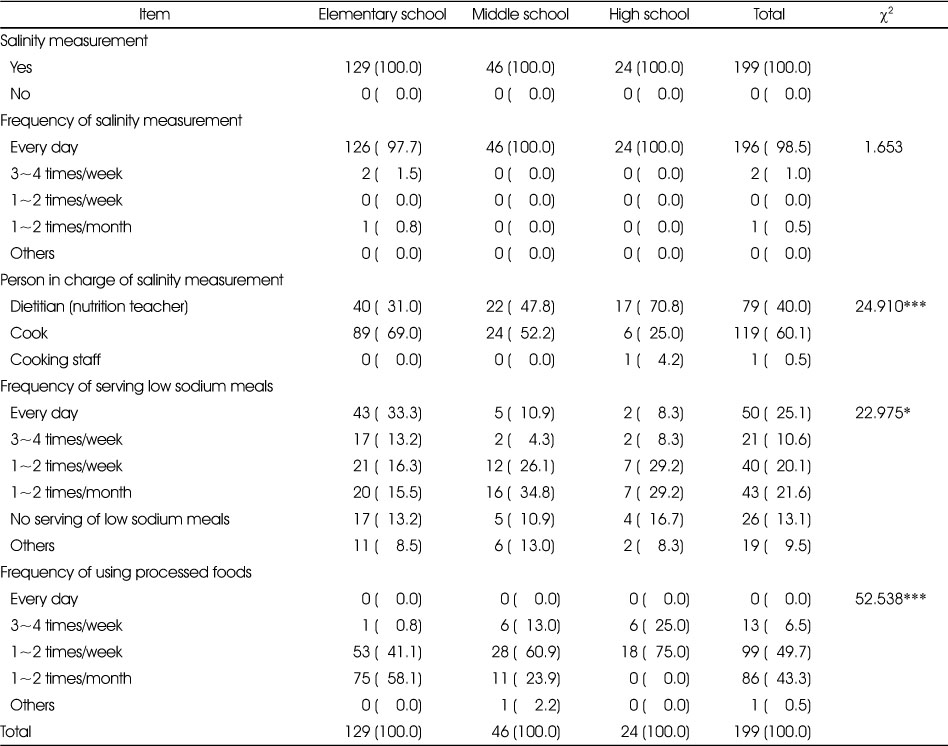


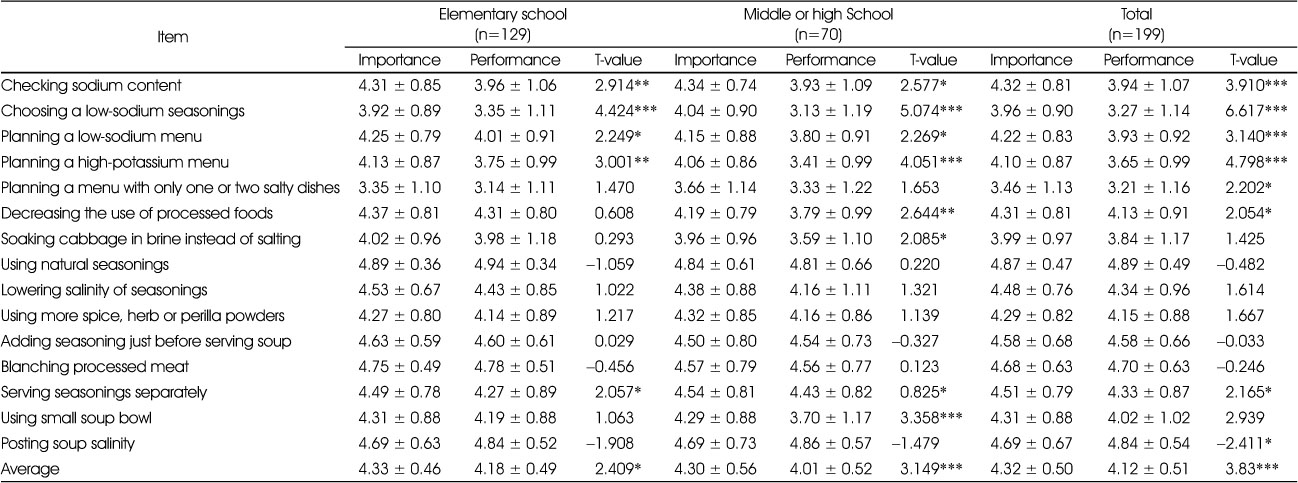
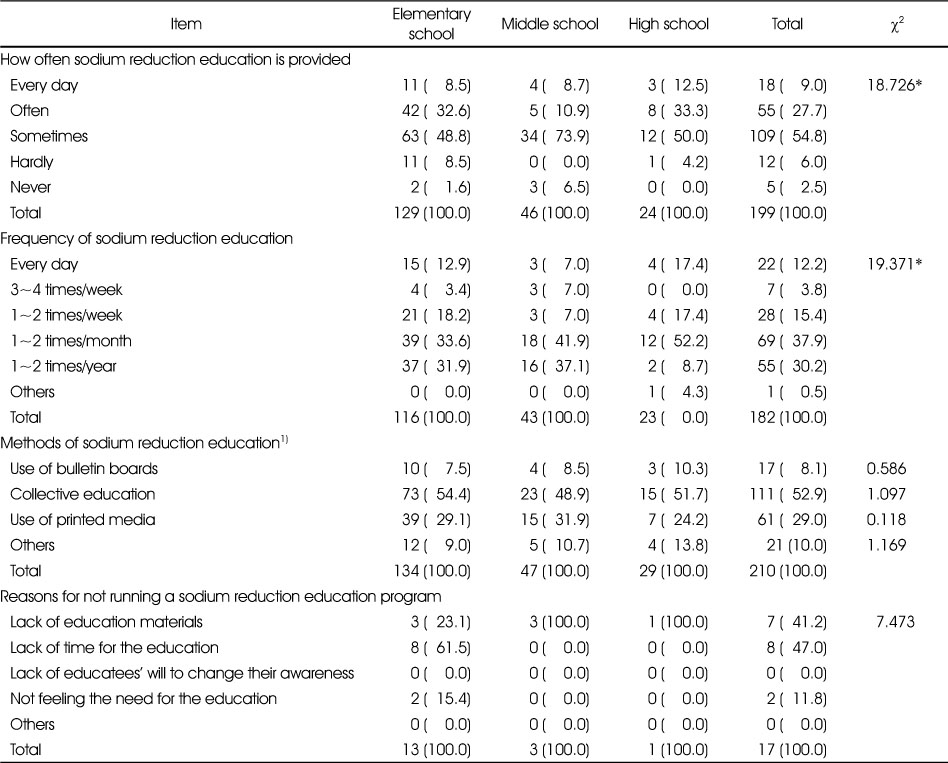
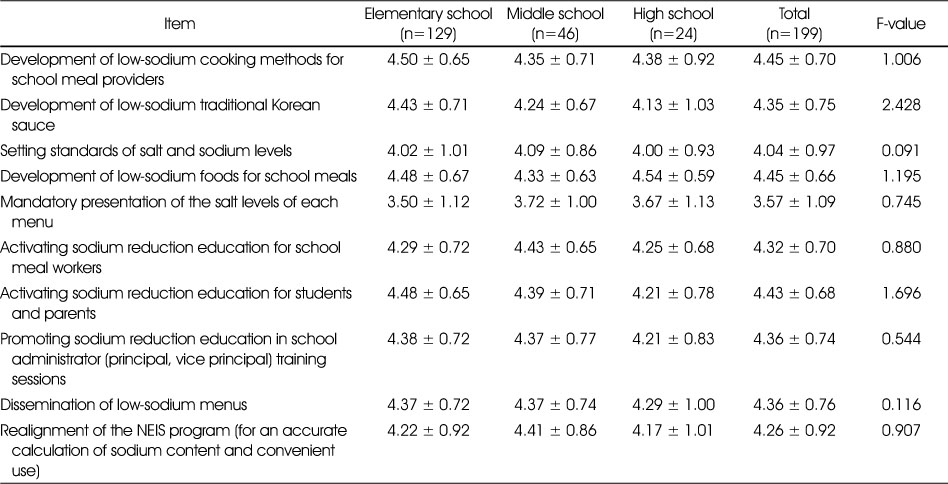

 Cite
Cite


